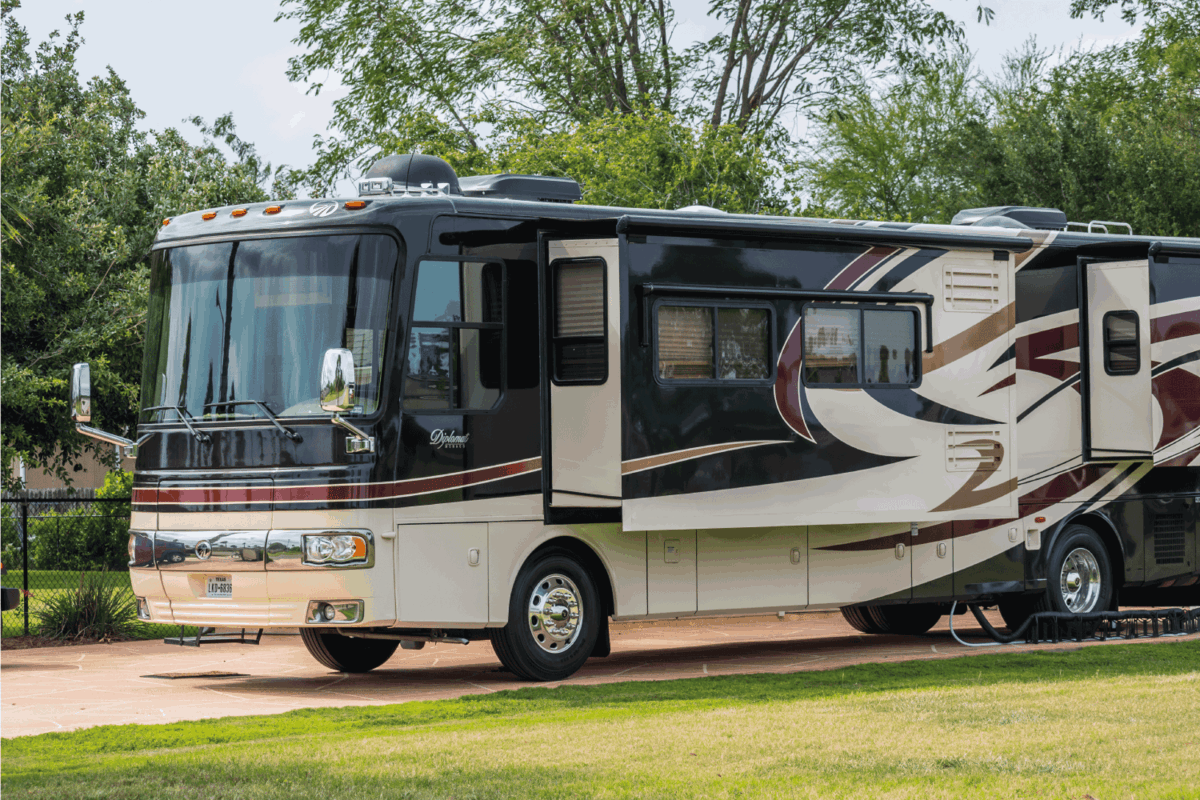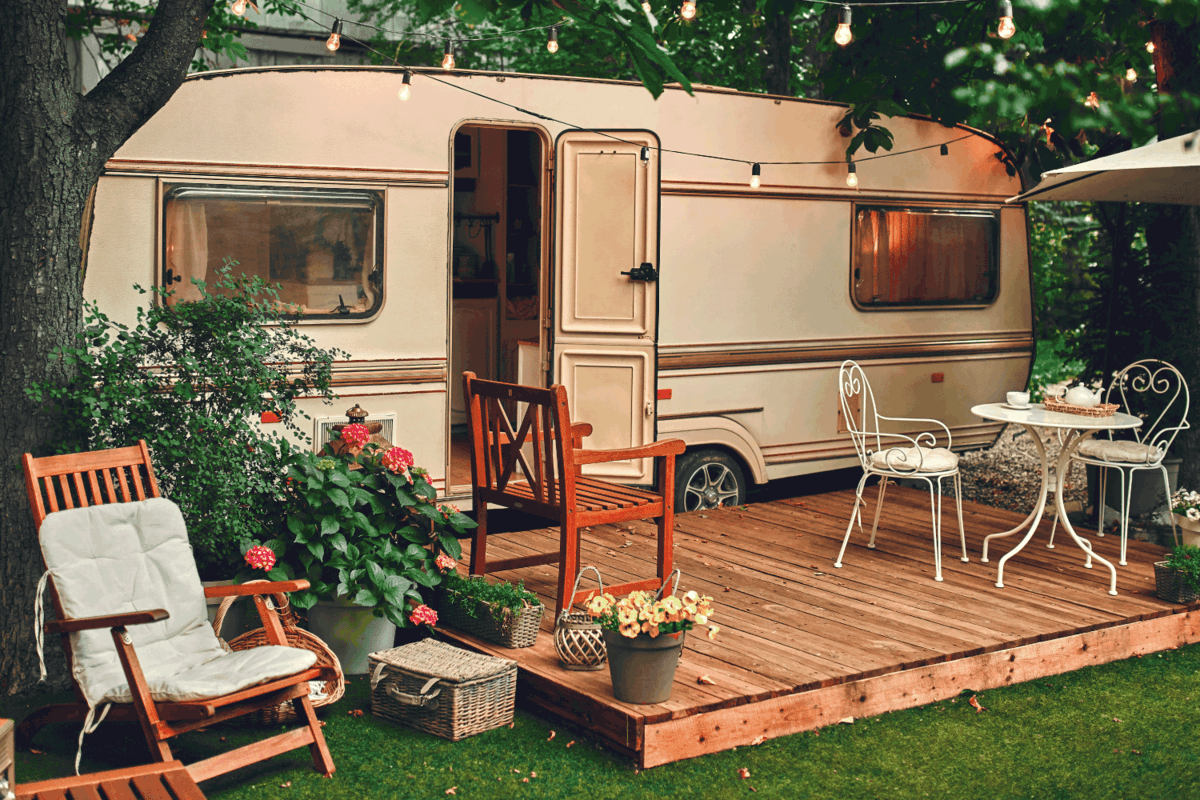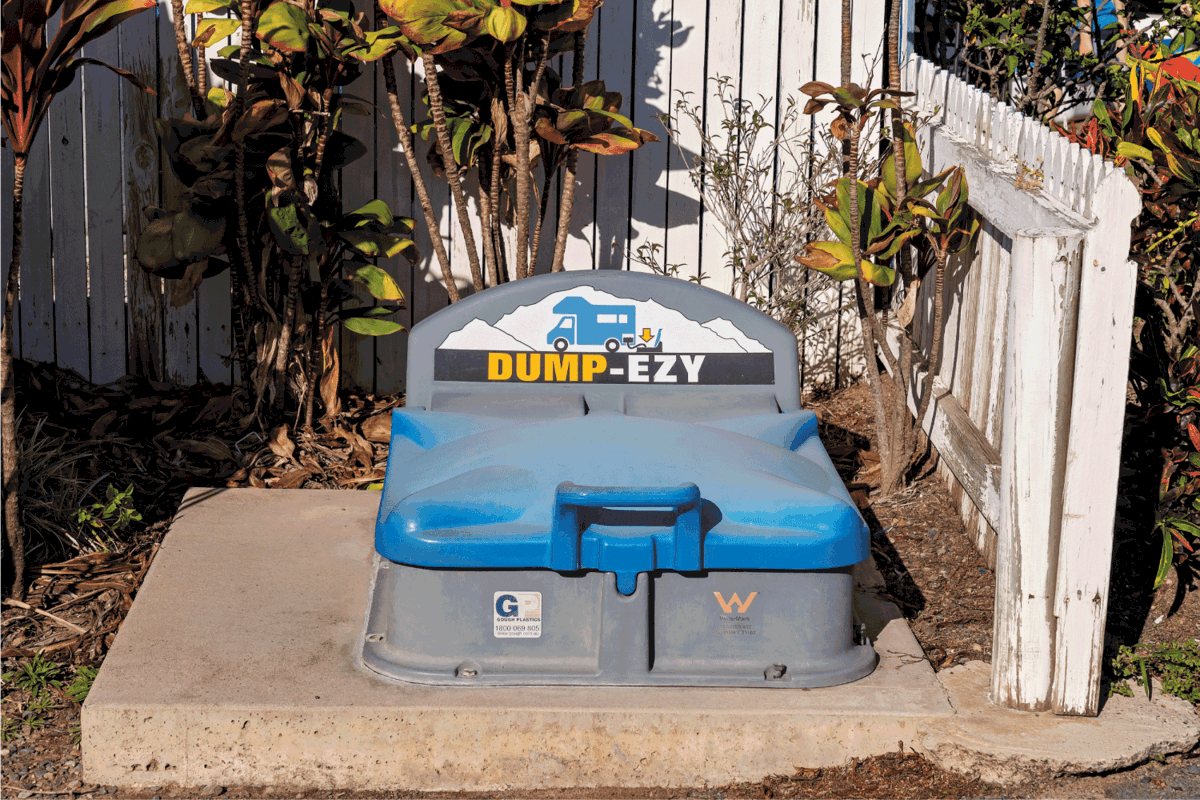Knowing how large your tanks are is vital whether you plan on boondocking for a short while in your RV, making a cross-country trip, or living in it full time. No one wants to have to find a suitable dumping spot every couple of days because their grey water tank is too small! So, how big is your RV's grey water tank, and how long can you go before dumping it? We've found these answers for you.
The average size of a grey water tank, between all sizes and classes of RVs, is about 50 gallons. But the tanks are designed to be proportional with the RV size and freshwater tank size. A large RV for a family needs a bigger grey water tank than an RV for just one person.
- Class A RVs are 21-45 feet long, with a grey water tank averaging 65-85 gallons.
- Class B RVs are much smaller, at 17-19 feet long. The grey water tank averages 10-30 gallons.
- Class C RVs, at 20-31 feet long, average a gray water tank of 28-40 gallons.
- 5th Wheel and Travel Trailers cover a wide range of sizes, and as a result, the gray water tank can be anywhere from 30-80 gallons.
Keep reading to learn more about your RV and just how big your tank should be. We'll cover how often you should be dumping the gray water, and where. This article also explains how to tell when your grey tank is full and what to do if your tank sensors aren't reading accurately. Plus, we'll explain just what greywater is— and how it's different from your blackwater tank.

What Size Grey Water Tank Do I Need?
The size of your grey water tank will depend, of course, on how much water you actually use. The average tank is 50 gallons, but this is an area where your mileage may vary. Someone who RVs alone will almost certainly use a lot less water than a family of six who showers often.
A decent rule of thumb is to make sure that your grey water tank is about the same size as your freshwater tank. If your RV only holds 45 gallons of water, then a tank that holds 45 gallons makes sense. That way, you have the convenience of having to do all the chores at once — refill the fresh water and drain the gray water simultaneously.
Of course, if you typically RV in the same campground and stay hooked up to a campground water source, this tip isn't as relevant. In that case, you'll just have to figure out how much water you go through in a day.
How Much Water Does My RV Use?
Knowing how much freshwater you use in a week will help you decide just how big your grey water tank needs to be. Showers can quickly fill your grey water tank, while someone who uses their water mostly for handwashing and a few dishes might only use 5 gallons of water a day.
The easiest way to figure out your daily use is to hook your RV up to a campground water connection and simply measure the output. A flow meter like this attaches to the hose and gives you an accurate reading of your water consumption.
Click here to see this flow meter on Amazon.
Aim for a tank large enough to hold greywater for about a week — it's a pain to have to dump the tank constantly. But avoid going so big that it takes longer than a week or so to fill. You want the tank nearly full before you dump it — the power of gravity on a full tank helps flush everything clean. And if it takes too long to get full, you risk things starting to get a bit smelly.
Average Tank Size For A Class A Motorhome
Class A motorhomes are the largest. They're designed to sleep 1-8 people and run 21-45 feet long.
Since they have the most room, they're designed with a family in mind. The Class A motorhome averages a grey water tank of 65-85 gallons. The freshwater tank holds 75-100 gallons.

Average Tank Size For A Class B Motorhome
You might assume that B is just one step down from A, but a class B motorhome is actually considerably smaller than either class A or C! Class B sleeps 1-4 people and is 17-19 feet long.
Class B, on average, will have a smaller gray water tank, proportional to its freshwater tank. The freshwater tank holds around 18-40 gallons. As a result, you can expect the gray water tank to hold a similar amount, around 10-30 gallons. Since these RVs are too small to be well suited for much dishwashing or showering, the tanks won't accommodate much.
Average Tank Size For A Class C Motorhome
Like Class A, a Class C can sleep anywhere from 1-8 people. It's a bit shorter, on average, though. Length ranges from 20-31 feet.
The freshwater tanks average 35-55 gallons, while the greywater tank holds 28-40 gallons.
Average Tank Size For A 5th Wheel/Travel Trailer
5th wheel and travel trailers are a large group, so averages are a bit unpredictable. They cover a wide range, anything from the smaller 18 feet trailers to as much as 40 feet long. This broad range is reflected in the variety of tank sizes as well.
The freshwater tank can range from 40-75 feet on average. The greywater tank also covers a wide range but can be as little as 30 gallons or as much as 80 gallons.

How Do I Know If My Grey Water Tank Is Full?
Most likely, your grey water tank has sensors that tell you when it's full. If the sensor isn't accurate, it probably just needs a good cleaning. The monitor panel lights up when the sensors are triggered, letting you know how long you have till the tank needs dumping.
Most tanks have sensors indicating various levels, like 1/4 full or 1/2 full. You can find the sensor along the sidewalls of the tank at the expected level. For example, the half-full sensor is located about halfway up the tank.
The RV Geeks website suggests cleaning the tank sensors by adding a cup of automatic dishwasher detergent to your half-full tank. Do this before you drive the RV for a distance, as the motion is part of the cleaning process. Once you get to your campground, empty the tank.
The more obvious sign that your grey water tank is full is that a too-full tank will eventually back up into the sink or shower. If standing water in the bottom of the shower won't drain, it's likely your tank needs to be emptied. But this isn't a very pleasant method to rely on, which is why RV manufacturers offer the sensors.
What Are Grey Water Tanks Made Of?
Greywater tanks are typically made of polyethylene or ABS plastic. Some people do not like plastic tanks, as they might be more likely to split or crack. In this case, stainless steel is also an option.
In plastic tanks, ABS is more common, since it's a bit easier to drill out the fittings yourself. But polyethylene tanks are used frequently as well. You can usually tell the difference because the tanks made of polyethylene have a milky coloring, while ABS is more solid.
What Is RV Grey Water?
In a house, the dirty, used water drains out into a septic system. Since the process happens, more or less, on its own, it isn't something you have to think about very often.
In an RV, on the other hand, there is no permanent place for the water to drain out while you shower or every time you wash dishes. Instead, the water is plumbed to be stored temporarily in the grey water tank. Once it's full, you can empty the tank at a campground dump station or into the sewer another way.
It houses everything but the toilet water — that's a higher level of contamination, and as a result, it gets stored separately in a black water tank. Dump the black water tank first. That way, when you dump the less dirty gray water after, it also helps flush out any leftover waste material from the hose.

Can You Dump Grey Water On The Ground?
No, you should never, ever dump grey water on the ground. It might not be as bacteria-filled as the black water, but it still isn't clean. While it may not be illegal, depending on your state, it's best to dispose of the grey water properly in a sewer or dump station.
Keep in mind that the water contains chemicals and products, such as dish soap, shampoo, or body wash. These items can be toxic and don't belong on the ground. It's not environmentally friendly, and the runoff can damage plants or pollute nearby water.
In Closing
Your RV's greywater tank depends on the size of your RV. A larger Class A motorhome has a greywater holding tank averaging 65-85 gallons. Meanwhile, a smaller Class B RV might only hold 10-30 gallons. Most of the water from your RV is diverted to this tank. Greywater is the dirty shower and sink water —everything but the more contaminated toilet water.
The best practice is to only dump the grey water when the tank is nearly full, but the tank may start to smell if it takes too long to fill. For this reason, the ideal grey water tank can hold about a week's worth of used water before needing to be dumped at a campground dump station or other appropriate sewer connection.
If you enjoyed this article, see:
How Much Does An RV Gray Water Tank Cost To Replace?
33 Best RV Furniture Online Stores That You Need to Know About

